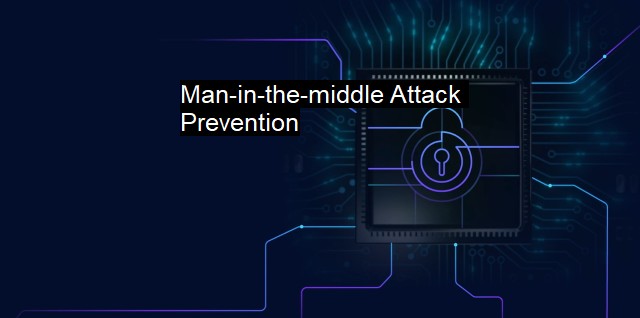What is Man-in-the-middle Attack Prevention?
Mitigating Man-in-the-Middle (MitM) Attacks: Prevention Methods and Tactics
A Man-in-the-Middle attack (MitM) is quite self-explanatory by definition – it happens when a communication between two systems is intercepted by an outsider entity or system. This outside entity “eavesdrops” on the conversation or interaction happening between the two systems without their knowledge. They can decipher, manipulate, or even interfere with the communication occurring between the two sides. anyone who is able to infiltrate the system can potentially gain access to sensitive data and exploit it for their benefit.A man-in-the-middle attack takes places when the attacker interjects himself in such a manner that he can control the conversation between two victims. The attacker tries to masquerade as one of the parties and alter the communication, or the information flow in the communication channel covertly. This can involve taking sensitive data such as login credentials, credit card information, and personal identification data, which can result in dangerous security breaches in individual as well as organizational systems.
The probability of such an occurrence should be highlight enough about the importance of robust protection against Man-in-the-Middle attacks. Ensuring prevention against MitM attacks holds utmost importance and should be considered as a key part of cybersecurity strategy for every organization.
Several types of MitM attacks occur, including IP spoofing, DNS spoofing, HTTPS spoofing, SSL hijacking, Email hijacking, Wi-Fi eavesdropping, among others. Potential harm from such threats can be quite significant which justifies the need for efficient antivirus systems.
To protect against these types of attacks, the primary aim should be mitigation, as it becomes challenging to completely prevent these attacks without accurate identification and knowledge. One way to ensure this mitigation is to enforce the use of only secure networks and abstain from making transactions or sharing sensitive information over unencrypted or public networks.
Strong encryption is one of the key components of prevention strategy, as encryption makes it difficult for hackers to decode the system data. Modern security protocols such as Secure Socket Layer (SSL) and Transport Layer Security (TLS) are used for data encryption. This deployment requires constant updates and verification to ensure the encryption standards are able to protect against new and evolving cyber threats.
Implementation of two-factor authentication (2FA) or multi-factor authentication tools is another critical aspect of defense against Man-in-the-middle attacks. The 2FA strategy involves secondary checks beyond just the login credentials to gain account access. The secondary checks could involve a challenge message, OTPs, biometric data, ubiquity checks etc, thereby adding another layer of protection to the system.
Antivirus software also has a substantial role in preventing MitM attacks. It is crucial that an antivirus software keeps updating to stay in sync with evolving cyber threats. An up-to-date antivirus program is incredibly effective in bolstering security barriers and protecting sensitive data. Cybersecurity team of an organization should constantly monitor and maintain these programs to give the system a fighting chance against these attacks.
Security education for employees is also a key aspect. Employees must be educated about phishing scam emails, clicking on unverified and misleading links, attachment downloads etc. This education coupled with a thorough antivirus scan can mitigate various potential threats involved in internet usage, especially now when remote workforce is largely prevalent.
Protection against Man-in-the-Middle attacks involves a robust multi-layered cybersecurity strategy emphasizing on encrypted communication, two-factor or multi-factor authentication, updated antivirus defences, and ongoing staff education. We must understand that in this rapidly evolving digital landscape, cybersecurity isn't an option anymore, but a necessity. Allowing such security breaches can result in disastrous outcomes leading to massive security lapses and damage to the organization’s reputation. Therefore, protection against MitM and similar cybersecurity threats has to be an indispensable part of the organizational safety culture.

Man-in-the-middle Attack Prevention FAQs
What is a man-in-the-middle attack?
A man-in-the-middle attack is a type of cyber attack where an attacker intercepts communication between two parties and impersonates each side to gain sensitive information.What are some preventive measures against man-in-the-middle attacks?
Some preventive measures against man-in-the-middle attacks include using secure connections, avoiding public Wi-Fi networks, using two-factor authentication, and implementing encryption protocols like HTTPS.How can antivirus software help prevent man-in-the-middle attacks?
Antivirus software can help prevent man-in-the-middle attacks by detecting and blocking known malware and suspicious network activity. Some advanced antivirus solutions also offer network protection features that can prevent unauthorized access and block malicious traffic.What are some signs that I may be a victim of a man-in-the-middle attack?
Some signs that you may be a victim of a man-in-the-middle attack include unexpected pop-ups, sudden changes in website URLs, and unusual website behaviors like broken images or unresponsive links. Additionally, if you notice unauthorized transactions or suspicious account activity, it's possible that your sensitive information has been compromised in a man-in-the-middle attack.| | A | | | B | | | C | | | D | | | E | | | F | | | G | | | H | | | I | | | J | | | K | | | L | | | M | |
| | N | | | O | | | P | | | Q | | | R | | | S | | | T | | | U | | | V | | | W | | | X | | | Y | | | Z | |
| | 1 | | | 2 | | | 3 | | | 4 | | | 7 | | | 8 | | |||||||